11 Pyrex Patterns You Need to Look for in Your Collection
The world of Pyrex collecting is filled with beautiful, vintage patterns that collectors adore. Some of these patterns are particularly rare and sought after by enthusiasts. If you are building your collection, there are certain designs that stand out for their beauty and history. These Pyrex patterns can bring a unique touch to any display or kitchen. Discover which patterns are truly worth searching for in your collection.
This post may contain affiliate links, which helps keep this content free. Please read our disclosure for more info.
Butterprint (1957-1961)
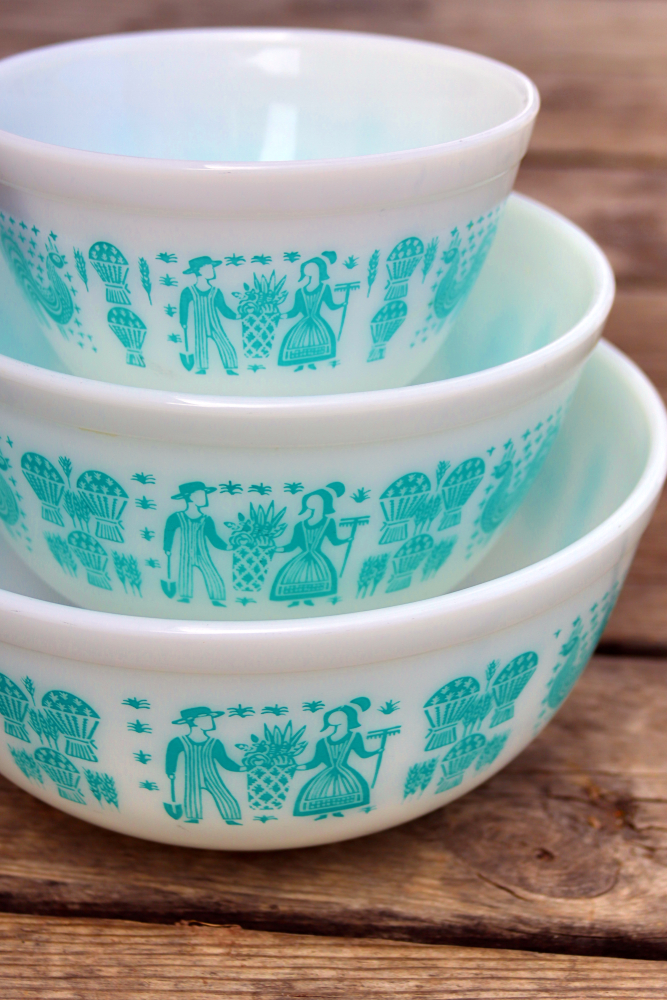
The Butterprint pattern, introduced in 1957, features a charming design of roosters and vines, often in a white color on a blue or green background. This pattern was part of the Cinderella line and became a favorite for many collectors. A complete set can fetch between $300 and $500, depending on the condition and rarity of certain pieces. The design’s nostalgic appeal and classic look make it highly collectible today.
The Butterprint pattern is most commonly found on mixing bowls, casseroles, and storage containers. It was produced for only a few years, contributing to its rarity. The delicate farm-themed design, with its intricate detail, continues to attract collectors who appreciate vintage kitchenware. Many collectors seek out this pattern for its historical value and its timeless aesthetic.
Snowflake (1958-1961)
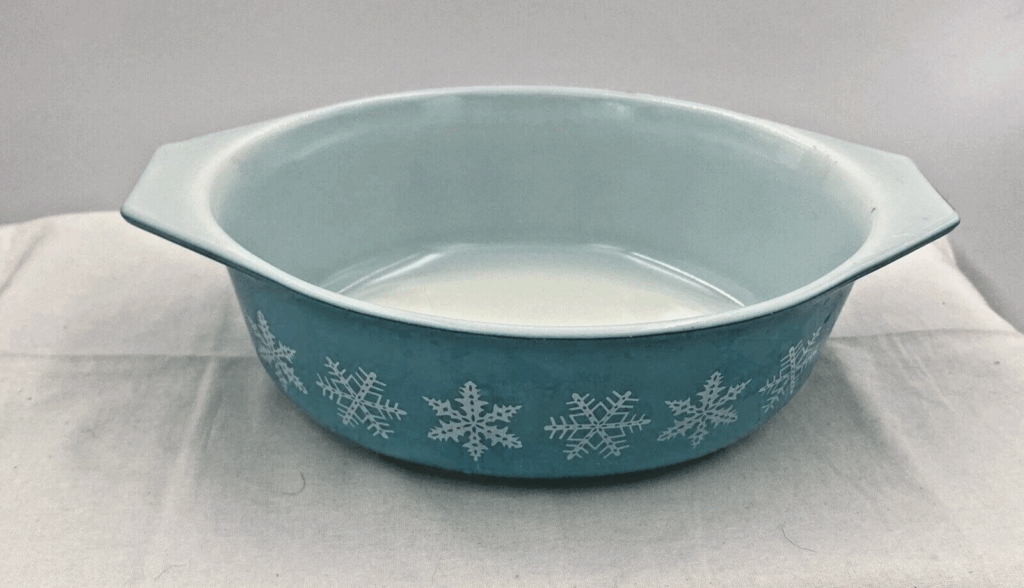
The Snowflake pattern, released by Pyrex in 1958, features white snowflakes set against a vibrant turquoise background. This pattern quickly became a classic due to its festive and wintery design. Depending on the piece and condition, Snowflake items can be worth anywhere from $100 to $400. The rarity of certain pieces, especially the large bowls, makes them especially valuable.
Snowflake pieces are most commonly found in mixing bowls, but the pattern also appeared on various other items like refrigerator dishes. The popularity of the pattern remains strong due to its seasonal charm, making it an enduring favorite among collectors. As a result, Snowflake Pyrex is often in high demand, and well-preserved sets command a premium price. The combination of nostalgic appeal and rarity makes it a top item for collectors.
Atomic Starburst (1950s-1960s)
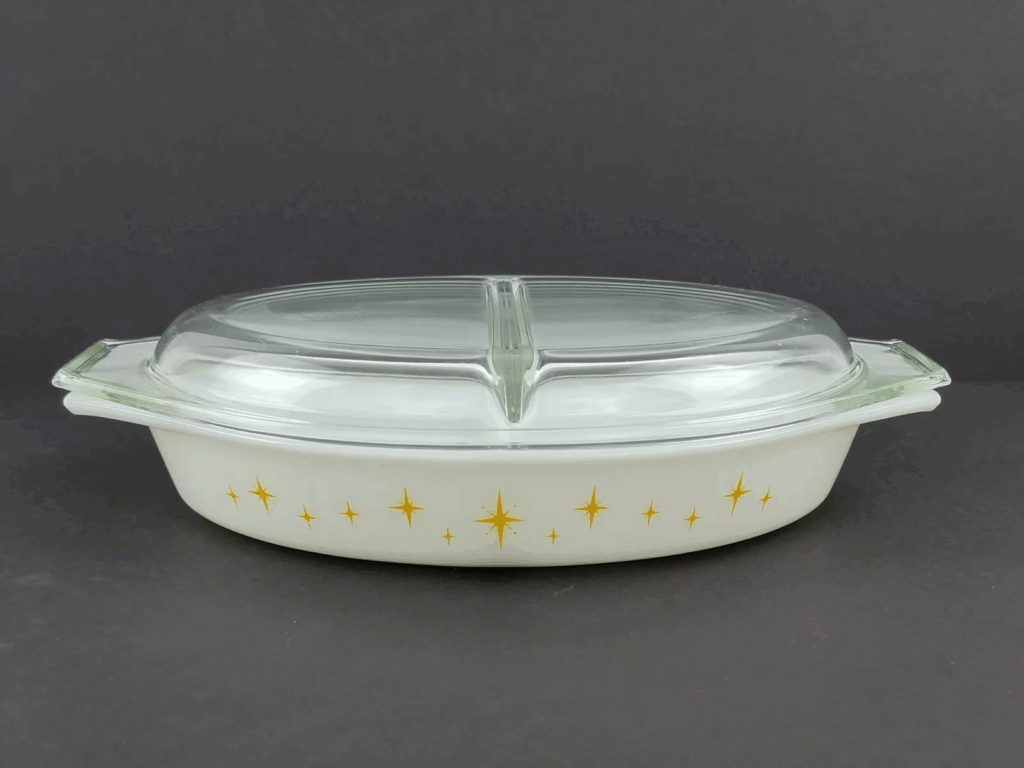
The Atomic Starburst pattern was introduced in the 1950s and features bold geometric shapes resembling starbursts or atomic symbols. This pattern is one of the most iconic mid-century designs, capturing the space age and modernist aesthetic of the time. Atomic Starburst items are highly sought after and can range in value from $200 to $700, depending on the piece and its condition. Its unique, playful design makes it a favorite among vintage Pyrex collectors.
Atomic Starburst pieces are often found on mixing bowls, casseroles, and even coffee pots. The pattern’s sharp lines and bright colors make it stand out from other Pyrex designs. It is a symbol of 1950s and 1960s design trends, and its popularity has continued to grow over the years. Many collectors seek this pattern for its bold look and historical significance.
Gooseberry (1957-1961)
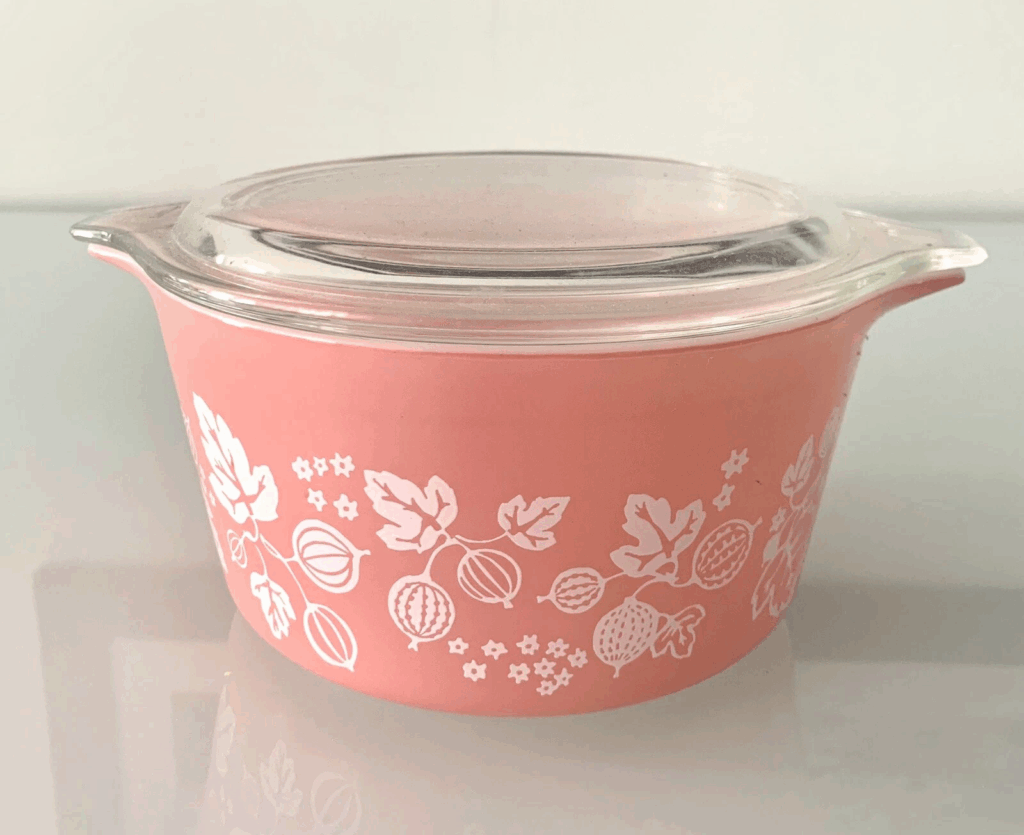
The Gooseberry pattern, released by Pyrex in 1957, features a floral design of vines and berries in either pink, green, or white. This pattern was part of a larger collection of vintage Pyrex items and became popular for its rustic, yet elegant design. Depending on the rarity and condition, a set of Gooseberry items can be worth anywhere from $100 to $500. Its timeless appeal and subtle beauty make it a desirable pattern for collectors.
The Gooseberry pattern is most commonly found on mixing bowls, casserole dishes, and even coffee mugs. The design’s delicate, floral details make it stand out as one of the more graceful Pyrex patterns. As a result of its popularity and limited production, Gooseberry pieces are among the more valuable items for Pyrex collectors. Its nostalgic appeal and classic design continue to attract vintage kitchenware enthusiasts.
Primaries (1950s-1960s)
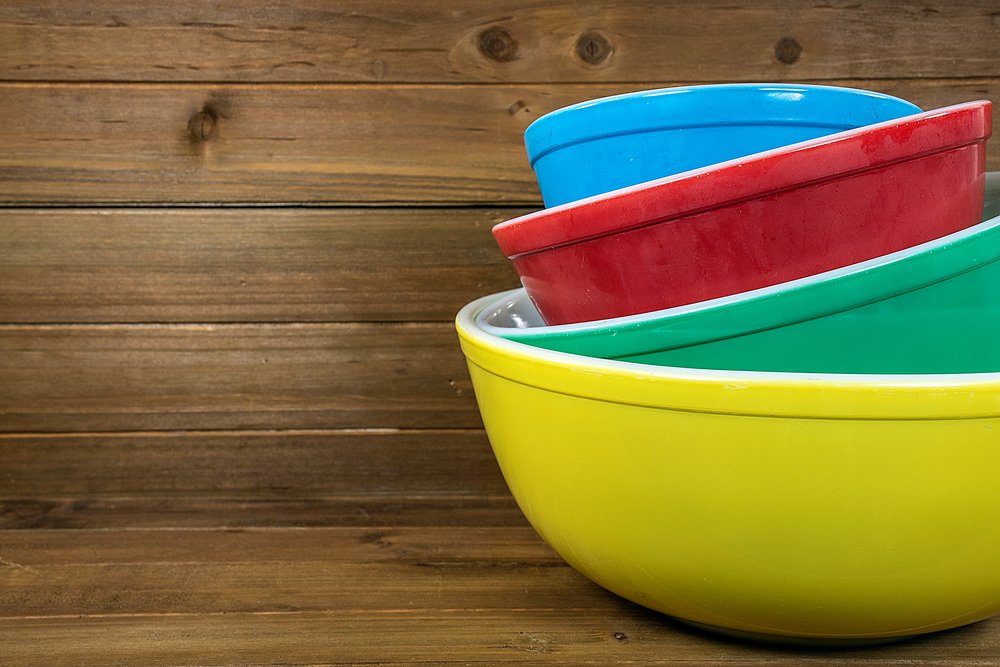
The Primaries pattern from Pyrex, first introduced in the 1950s, features bright primary colors, including red, yellow, and blue. This pattern was part of the early days of Pyrex’s iconic kitchenware designs and quickly became popular due to its bold and simple appeal. A complete set of Primaries mixing bowls can be valued at $200 to $500, depending on condition. Its clean lines and vibrant colors make it a classic example of mid-century design.
The Primaries pattern is particularly popular for its versatility, as the bowls can be used for both cooking and display. These mixing bowls were designed to be functional, and their simple design makes them suitable for a wide range of kitchen themes. The combination of practicality and style has made the Primaries pattern a sought-after item for collectors. Today, these bowls are not only collectible but also continue to be used in kitchens around the world.
Flamingo (1957-1960)

The Pyrex Flamingo pattern was introduced in 1957 and features a striking tropical design with vibrant pink flamingos and lush foliage. This pattern was produced in limited quantities, making it one of the rarer Pyrex patterns available today. Depending on the piece and condition, Flamingo items can range in value from $150 to $500. The vivid design and tropical feel make it a standout choice for collectors looking for a unique piece of Pyrex history.
The Flamingo pattern was most commonly featured on casserole dishes, but it also appeared on bowls and serving dishes. The bold pink colors combined with the tropical motif make it a true reflection of mid-century design. The rarity of this pattern, combined with its eye-catching design, continues to make it a popular choice for collectors. Its tropical charm has remained desirable for decades.
Red Hearts (1960s)
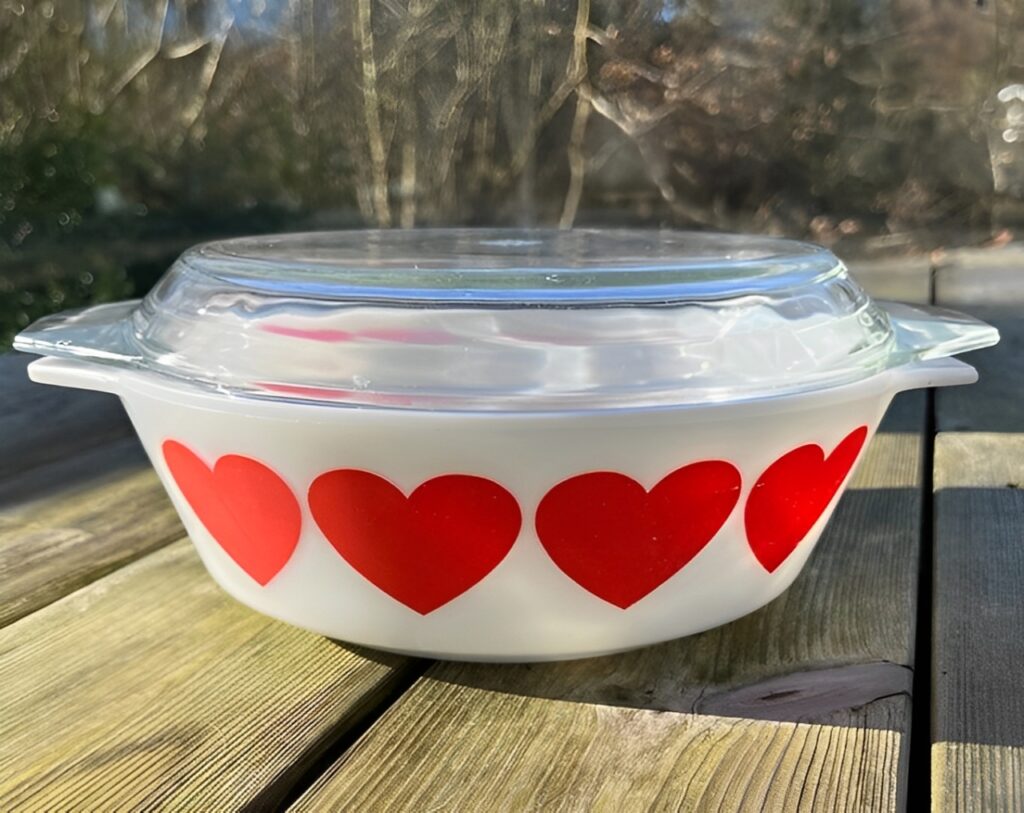
The Red Hearts pattern, released by Pyrex in the 1960s, is one of the most beloved designs, featuring simple red heart shapes arranged in a repeating pattern. It was a part of the Valentine’s Day collection and has remained a popular choice among Pyrex collectors. A complete set of Red Hearts bowls or dishes can be worth between $150 and $400, depending on the condition. The pattern’s clean and simple look, combined with its vintage charm, makes it a standout in any collection.
Red Hearts items are most commonly found on mixing bowls and baking dishes. This pattern appeals to those who enjoy Pyrex’s nostalgic and festive designs. Although not as widely produced as other patterns, Red Hearts remains a highly collectible set for those interested in holiday-themed kitchenware. Collectors love the sweet, heartwarming design, making it a must-have for many.
Turquoise (1950s-1960s)
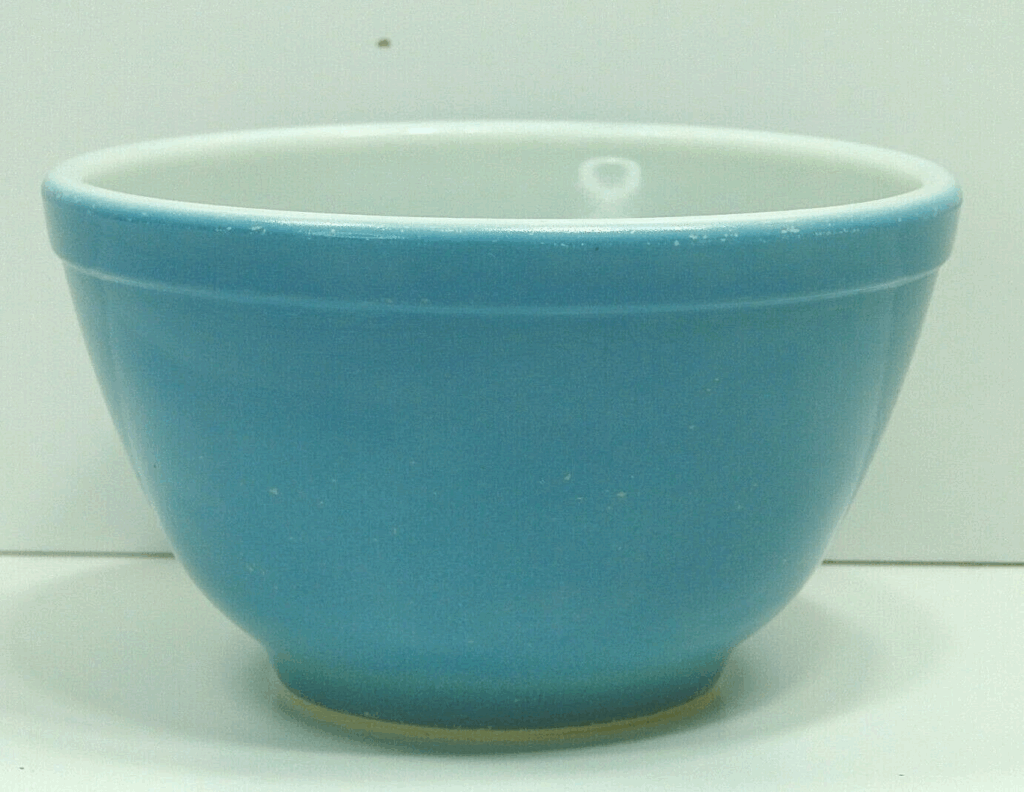
Pyrex’s turquoise pattern, introduced in the 1950s and 1960s, features a solid turquoise color that became a signature design for the brand. This pattern was used on various pieces, including mixing bowls, casseroles, and storage containers. A set of turquoise Pyrex can be worth between $100 and $300, with rarer pieces commanding higher prices. The simplicity of the design and its bright color make it an enduring favorite among collectors.
The turquoise color became iconic in the mid-20th century, and many people associate it with vintage kitchenware. It was one of the most popular colors of the era, and as a result, many households still use Pyrex pieces with this pattern. The solid, bright color continues to be a timeless addition to any collection, making it a standout piece in the Pyrex world. Its nostalgic appeal and widespread popularity help maintain its value in the market.
White with Gold (1960s-1970s)
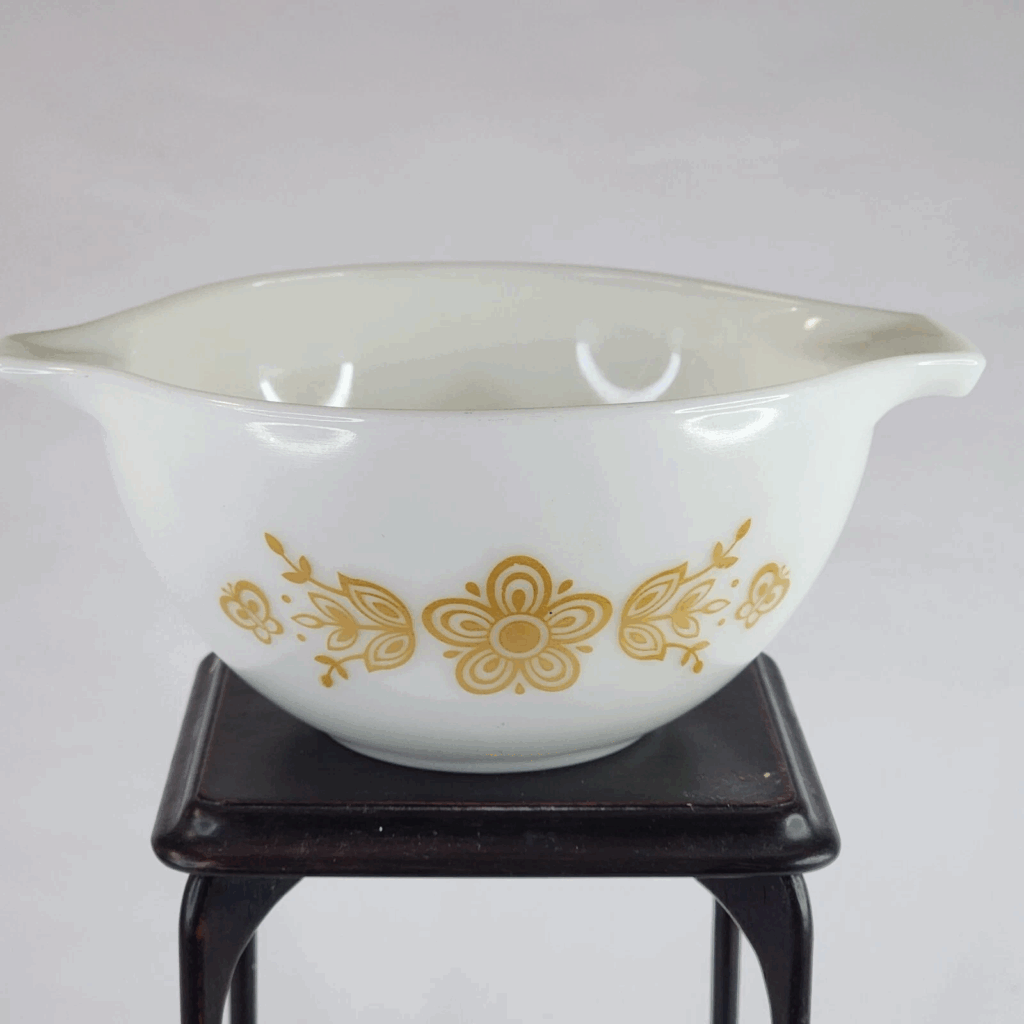
The White with Gold pattern was introduced in the 1960s and features elegant gold accents on white Pyrex pieces. This pattern became popular for its sophisticated and timeless look, making it a favorite among collectors. Depending on the condition and item, pieces from this pattern can range from $100 to $400. The use of gold accents on classic white Pyrex creates a refined, upscale appearance that remains desirable today.
The White with Gold pattern was featured on a variety of Pyrex items, including mixing bowls, casseroles, and serving dishes. Its luxurious and elegant design makes it perfect for both display and practical use. The rarity of this pattern, combined with its classic design, has kept it highly valuable in the collector’s market. White with Gold continues to be a standout in any vintage Pyrex collection.
CorningWare Blue Cornflower (1950s-1980s)
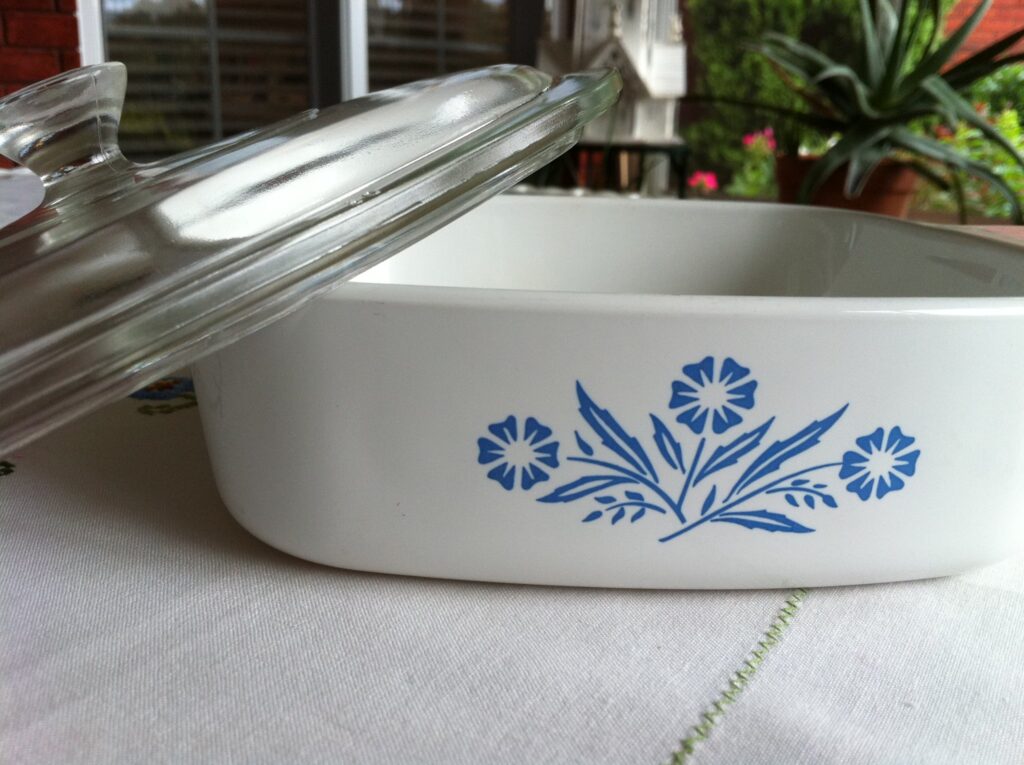
The CorningWare Blue Cornflower pattern, introduced in the late 1950s, is one of the most iconic patterns associated with Corningware cookware. The blue cornflower design, which appears on the sides of dishes, is simple yet elegant, making it highly collectible. A set of Blue Cornflower CorningWare can range in value from $50 to $200, with rare and older pieces sometimes exceeding this price range. This pattern’s lasting popularity stems from its classic, timeless look.
Blue Cornflower CorningWare was produced for over three decades, and many households enjoyed using these pieces for everyday cooking. The sturdy, heat-resistant glassware combined with the beautiful blue pattern made it a staple in kitchens. Collectors continue to value these pieces not only for their utility but also for their aesthetic appeal. As a result, Blue Cornflower remains one of the most collectible and sought-after patterns today.
Pyrex Early American (1970s-1980s)
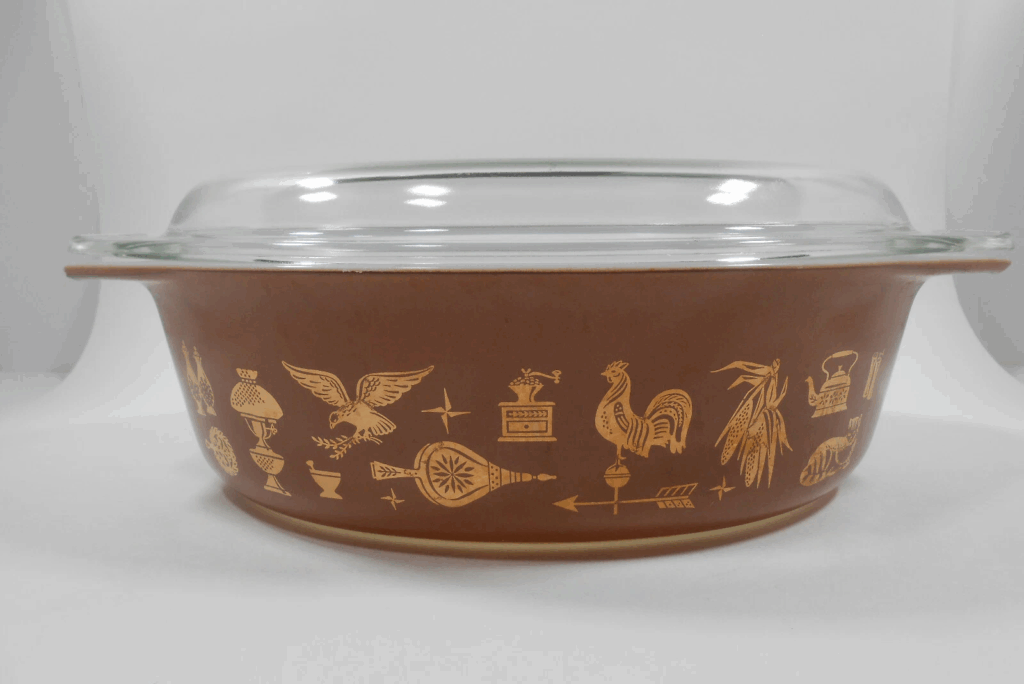
The Pyrex Early American pattern, first released in the 1970s, features a colonial-inspired design with images of animals, horse-drawn carriages, and country scenes. This design appeals to collectors who appreciate its vintage, Americana feel. A set of Early American Pyrex can be valued between $100 and $250, depending on condition and rarity. The pattern’s classic, rustic look makes it a popular choice for collectors of American-themed kitchenware.
Early American Pyrex was produced for over a decade and was widely available in homes during the 1970s and 1980s. Its images evoke a nostalgic sense of rural America, which continues to attract collectors today. The earthy tones of brown and gold used in the design add to the vintage charm of these pieces. Many collectors enjoy adding Early American Pyrex to their collections for both its beauty and historical significance.
Pyrex patterns have become timeless treasures for collectors around the world. The beauty and history behind each design make them valuable additions to any collection. As interest in vintage Pyrex grows, these pieces continue to rise in demand and value. Starting or expanding your collection with these sought-after patterns is a great way to enjoy both their practical use and collectible appeal.
This article originally appeared on Avocadu.
